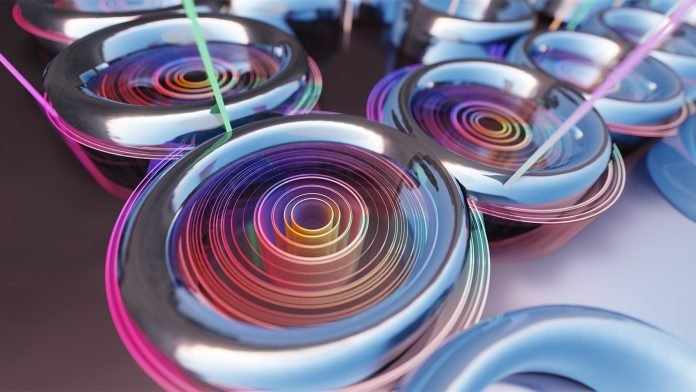
Scientists have created a groundbreaking device that can generate a wide range of laser light colors using a small chip.
This new technology, known as a topological frequency comb, was achieved with a tiny silicon nitride chip covered in hundreds of microscopic rings.
The details of this discovery were published in the journal Science.
A regular laser emits light of a single color, or frequency. A frequency comb, however, produces light at many different, evenly spaced frequencies, similar to the teeth of a comb.
These devices are highly valuable in various scientific fields because they allow for precise measurements of light.
Traditional frequency combs required large, bulky equipment. Recent advancements have focused on creating smaller, chip-based versions. Despite the reduction in size, the core concept remains the same: a stable light source is needed, along with a method to split this light into the many frequencies that make up the comb.
In their new work, researchers combined two areas of study. One area focuses on miniaturizing frequency combs using tiny resonator rings made from semiconductors. The other area, called topological photonics, uses patterns of repeating structures to create pathways for light that remain stable even with minor imperfections.
Chris Flower, a graduate student at the University of Maryland and lead author of the study, explains that their goal was to see if similar physics could be applied to a complex arrangement of hundreds of coupled rings. The team designed a chip with these rings in a two-dimensional grid, creating a complex pattern that circulates input laser light around the chip’s edge, breaking it into many frequencies.
The researchers captured images of the light circulating around the chip and conducted high-resolution analyses of its frequencies. They found that the light formed a nested frequency comb, with one comb having broad teeth and another smaller comb within each tooth.
Although this nested comb is currently just a proof of concept and not yet perfect, it shows great potential. The new device could lead to smaller, more efficient frequency combs for use in atomic clocks, rangefinding detectors, quantum sensors, and other applications requiring precise light measurements.
The chip’s design features hundreds of microscopic rings, allowing photons (light particles) to hop from ring to ring. The shape and size of these rings were carefully chosen to create just the right interference patterns. Together, the individual rings form a larger “super-ring,” which disperses the input light into the many frequencies of the comb and guides them along the chip’s edge.
The microrings and the super-ring provide two different time and length scales. Light takes longer to travel around the super-ring than the smaller microrings, leading to the creation of the two nested frequency combs. The smaller microrings produce a coarse comb with widely spaced frequency spikes, while the super-ring generates a finer comb within each of those spikes.
Creating the chip took over four years, with only one company capable of manufacturing it. Early versions had microrings that were too thick and sharp, causing unwanted light scattering. The team refined the design, ultimately succeeding with a third-generation chip in mid-2022.
Another challenge was delivering enough laser power to the chip. Continuous-wave lasers delivered too much heat, causing the chips to burn out or misalign. The team switched to pulsed lasers but had to find a balance between peak power and pulse duration. After extensive searching, they collaborated with a French company to create a custom laser that worked perfectly.
The researchers believe their chip design can be adapted to other photonic materials, creating frequency combs in different bands. They also see it as a new platform for studying topological photonics, particularly in applications requiring precise behavior and complex effects like frequency comb generation.
This exciting development in laser technology could revolutionize various scientific fields, making precise light measurements more accessible and efficient.
Source: KSR.



